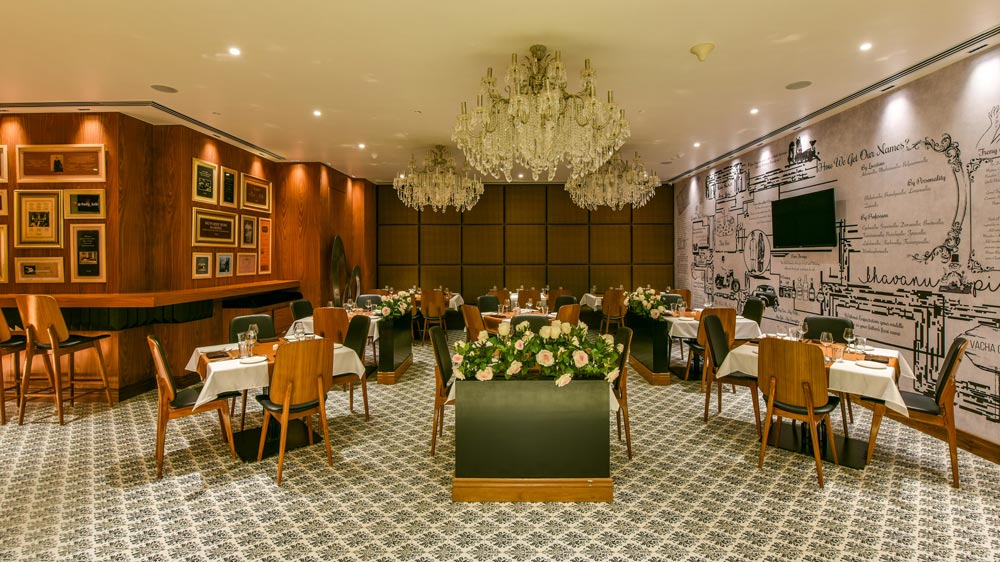Innovative Restaurant Table Designs: How Leadership & Innovation Drive Sustainability in Restaurant Furniture

Restaurants today are more than places to enjoy good food. They are spaces where design, atmosphere, and values blend to create memorable experiences. One of the most overlooked yet impactful elements in shaping these experiences is the restaurant table. In recent years, table design has evolved beyond simply being functional or stylish. It now reflects the values of the restaurant, particularly its commitment to the environment.
The demand for sustainable furniture has been rising fast, with around 70% of restaurant chains naming sustainability as a top priority for procurement. Leaders in the hospitality industry are beginning to see the benefits of aligning design with environmental responsibility. When restaurant owners make bold, forward-thinking choices in furniture design, they do more than follow a trend. They send a clear message about their brand values and attract customers who care about sustainability.
This growing awareness is reshaping the market. The global sustainable furniture sector is expected to grow at more than 7% each year, with the potential to more than double in value over the next decade. Even a modest 30% reduction in the carbon footprint of a single commercial-grade restaurant table, multiplied across an entire chain, can mean hundreds of metric tons saved annually. Nearly half of diners are willing to pay a little extra for an eco-conscious dining experience, making sustainability a powerful business strategy as well as a moral choice.
Visionary Leadership: Driving Change in Restaurant Furniture
Strong leadership plays a key role in transforming restaurant furniture design. When owners and managers place sustainability at the heart of their decisions, it shapes every stage of the process—from concept to installation. By setting clear priorities, they ensure their design briefs balance beauty, durability, and environmental responsibility.
Forward-thinking leaders work closely with manufacturers to develop greener prototypes and select materials that align with their environmental goals. Some even demand complete transparency in sourcing, ensuring every component comes from ethical and sustainable origins. This leadership-driven approach builds trust with customers and positions the restaurant as an industry example.
While only about 40–45% of restaurants have adopted sustainable furniture practices, those that do stand out in a competitive market. Leaders can also measure returns on their investment by tracking resource savings per table and factoring in reduced replacement costs. Creating supplier scorecards or setting annual sustainability targets ensures that eco-conscious design stays at the top of the agenda.
Innovative Design Trends Shaping Sustainable Restaurant Tables
Design innovation is reshaping the restaurant table market, and other markets like real estate and more. Many venues now use multi-functional tables that can adapt to different dining needs without the need for extra furniture. Modular systems make it easy to change layouts, accommodating anything from intimate dinners to large parties without replacing tables.
Material combinations like reclaimed wood paired with recycled metal offer a unique, stylish look while reducing environmental impact. Low-impact finishes such as waterborne stains or natural oils help improve indoor air quality and reduce harmful emissions. New table shapes and ergonomic designs are allowing restaurants to use less material without sacrificing comfort.
Other clever ideas include collapsible legs and tops that reduce packaging volume by up to half during shipping, cutting down on transport emissions. Flat-pack kits allow more tables per pallet, lowering shipping-related carbon footprints by as much as 40%. Some designers are even reporting that smart-built modular tables last 20% longer than fixed-leg designs, extending their usefulness and saving resources.
Sustainable Material Choices: Building Tables with Responsibility
Material selection has a huge impact on sustainability. Using FSC-certified or recycled wood ensures responsible forestry practices. Upcycling materials such as barn wood, factory off-cuts, or re-milled beams not only reduces waste but also creates character-rich furniture. Locally sourced materials further cut shipping emissions while supporting nearby communities.
Plant-based composites and bio-resins are gaining popularity for their eco-friendly properties. These alternatives mimic the look and feel of traditional finishes without the environmental cost of plastics. Durability is equally important; furniture that lasts longer means fewer replacements and less waste in the long run.
Maximizing reclaimed wood use can cut embodied carbon by as much as 50% compared to new lumber. Materials like bamboo can regrow in as little as 5–7 years, making them a rapidly renewable option. Restaurants choosing durable, reclaimed-wood tables can save up to 20% in total lifecycle costs thanks to their longer lifespan.
Technology’s Role in Advancing Eco-Friendly Table Production
Technology is helping manufacturers create tables with less waste and more precision. CNC machining and digital fabrication cut materials with extreme accuracy, minimizing scraps. Water-based and low-VOC finishes make workspaces safer and dining areas healthier.
3D printing opens the door to custom components that fit perfectly without excess material. Production-tracking tools monitor energy use, waste, and material consumption, allowing manufacturers to spot inefficiencies and make improvements. Digital planning now makes it easier to design tables for disassembly, ensuring they can be repaired, reused, or recycled when their life cycle ends.
Digital cut-lists have been shown to reduce scrap by up to 35% compared to traditional methods. AR visualization tools allow clients to approve designs before production, avoiding unnecessary prototypes and waste. Some new sensor-enabled fittings even track table usage and suggest repairs before damage becomes severe, extending furniture life and reducing landfill waste.
Leadership in Supplier Partnerships and Ethical Sourcing
Sustainable furniture design depends on strong relationships with suppliers. Leaders who commit to long-term partnerships can ensure their suppliers maintain eco-friendly and ethical practices. Regular audits keep suppliers accountable, while fair-trade agreements help improve working conditions and reduce exploitation.
Some restaurant owners insist on closed-loop systems where suppliers take back old furniture for recycling or repurposing. This approach not only reduces waste but also fosters innovation in sustainable manufacturing. Transparent sourcing builds trust with customers, who increasingly want to know where and how their furniture is made.
Leadership can push the industry forward by demanding full chain-of-custody documentation from suppliers. By funding supplier innovations, such as new recycled aluminum processes, restaurants can directly support the development of greener materials. Creating local sourcing networks between artisans, reclaimed-wood suppliers, and hospitality buyers strengthens community connections while lowering environmental impact.
Final Thoughts: Leading the Future of Sustainable Restaurant Furniture
The shift toward sustainable restaurant table design is more than a passing trend. It reflects a deeper change in how restaurants define their identity and connect with customers. Leaders who combine innovation with environmental responsibility are shaping the future of hospitality, creating furniture that blends style, durability, and purpose. These choices appeal to a growing number of diners who value authenticity and want their dining experience to reflect their commitment to the planet.
Sustainability in furniture design is no longer just about reducing harm. It is about building lasting value. By working with ethical suppliers, embracing advanced manufacturing, and selecting responsible materials, restaurants can strengthen customer loyalty, cut long-term costs, and set new industry standards. Those who lead with vision today will inspire a dining culture where beauty, function, and environmental stewardship go hand in hand.



